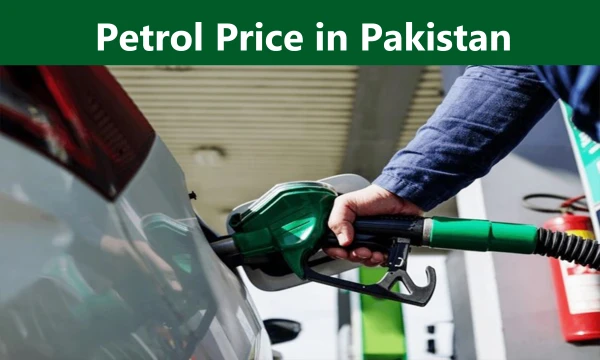
- Admin
- Oct 02, 2025
- latest updates
Latest Petrol Price in Pakistan Today – Updated Fuel Rates
As of 1st November 2025, the Government of Pakistan has blazed the rearmost adaptations in energy prices under its regularbi-monthly audit medium. According to the endorsed statement, the petrol price in Pakistan will stay unchanged at Rs 268.68 per liter, outfitting a few soundness to buyers in the midst of moving worldwide oil portray demands.
Meanwhile, the cost of tall- speed diesel( HSD) has been decreased by Rs 3 per liter, bringing the modern rate to Rs 276.81 per liter. Other petroleum items have too seen slight varieties.
- Kerosene oil portray Rs 176.81 per liter
- Light Diesel Oil( LDO) Rs 159.76 per liter
These adjustments are a portion of the government’s pricing strategy, which adjusts household vitality rates with transnational task patterns and the country’s beneficial conditions. The unaltered petrol price Pakistan offers brief alleviation to buyers, particularly those affected by recent inflationary pressures.
Petrol Price in Pakistan Updates
Here are the latest updates on petrol prices in Pakistan (2025):
|
Fuel Type |
Old Price |
New Price |
Difference |
|
Petrol (Super / Regular) |
PKR 264.61 |
PKR 268.68 |
4.07 |
|
High-Speed Diesel (HSD) |
PKR 272.77 |
PKR 276.81 |
4.04 |
|
Light Speed Diesel |
PKR 159.76 |
PKR 159.76 |
0 |
|
Superior Kerosene Oil (SKO) |
PKR 176.81 |
PKR 176.81 |
0 |
Understanding How Petrol Prices Are Set in Pakistan
To appreciate why fuel prices change and how they are determined, it's vital to get it the basic estimating structure.
1. Role of OGRA
The Oil and Gas Regulatory Specialist (OGRA) calculates suggested fuel costs based on different factors such as worldwide oil costs, cargo charges, trade rates, and residential charges. These suggestions are at that point looked into and finalized by the Benefit of Finance in discussion with the Prime Minister.
To appreciate why fuel prices change and how they are decided, it's important to understand the basic pricing structure.
2. Key Pricing Components
The price of petrol in Pakistan is influenced by several critical components, including:
-
Import Parity Price (IPP): .Since Pakistan imports the majority of its fuel, international oil costs directly influence local rates.
-
Petroleum Development Levy (PDL): A major revenue-generating tax imposed by the government on each liter sold.
-
Sales Tax (GST): This tax is added to the cost after demands and cargo charges are included.
-
Dealer and OMC Margins: These are the benefit edges permitted to oil marketing companies and fuel station owners.
-
Exchange Rate Effect: Since crude oil is purchased in US dollars, the rupee-dollar exchange rate plays a significant part in last pricing.
3. Review Mechanism
Fuel prices in Pakistan are changed every 15 days, regularly on the 1st and 15th of each month. These revisions reflect shifts in international oil costs and domestic financial policy.
Why Petrol Prices Are High in 2025
There’s no single reason why petrol (gasoline) prices are tall in 2025; rather, multiple global and local factors connected. Below is a breakdown of the main drivers and how they intensify each other:
1. Global Crude Oil Prices
One of the essential reasons for high fuel costs is the rise in global rough oil prices. In 2025, international markets have experienced visit price spikes due to:
- Geopolitical tensions in oil-producing regions
- Production cuts by OPEC+
- Increased demand as economies rebound post-global downturns
2. Depreciation of the Pakistani Rupee
Another important factor is the cheapening of the Pakistani Rupee against the US Dollar. As the rupee weakens, the cost of bringing in oil increases, which directly impacts the Pak petrol price and is ultimately passed on to the buyer.
3. Increase in Petroleum Levies
To meet its revenue targets under agreements with international lenders like the IMF, the government has increased the Petroleum Development Levy several times in 2025. This directly inflates the price of fuel at the pump, contributing to the rising petrol rate in Pak.
4. Inflationary Pressures
With inflation rates remaining high, costs across the board from transport to manufacturing have surged. Fuel, being a core input, is both a contributor to and a victim of inflation.
Economic and Social Impact of Rising Fuel Prices
The increase in petrol and diesel costs has broad impacts on the economy and the everyday life of standard Pakistanis.
1. Transportation Costs
With higher petrol and diesel rates, open and private transportation costs have increased. Transport admissions, ride-hailing rates, and delivery charges have gone up, influencing both people and businesses.
2. Rising Cost of Goods
Transportation is a basic part of the supply chain. When fuel costs rise, so do the costs of moving goods. This leads to higher costs for regular things including food, clothing, and essential services.
3. Impact on Agriculture
High-speed diesel is broadly utilized in farming for tractors, gatherers, and water system pumps. Rising diesel costs increase farming costs, which impacts food costs and rancher profitability.
4. Industrial Sector Challenges
Manufacturers who depend on fuel for control era and logistics face increasing operational costs, diminishing competitiveness and pressing profit margins.
5. Household Budgets
For middle- and lower-income families, rising fuel costs cruelly less disposable salary. Monthly budgets are under weight as fuel, food, and utility costs increase.
Government’s Strategy and Fiscal Considerations
The government faces a difficult balancing act. On one hand, it needs to raise incomes through charges and demands on petroleum items. On the other hand, it must oversee open discontent, swelling, and economic slowdown.
Revenue from Petroleum Products
Petroleum levies are a noteworthy source of non-tax income. By maintaining tall petrol costs, the government is able to meet its fiscal shortage targets and fulfill conditions set by international loaning agencies.
Political and Social Considerations
Fuel costs are exceedingly delicate in Pakistan. Any significant climb can lead to open challenges, strikes, and political weight. Hence, the government regularly moderates cost increases or retains costs briefly, especially during politically delicate periods.
Recent Fuel Price Changes in 2025
Here a summary of recent fuel price changes in Pakistan during 2025 (petrol & related fuels):
- August 2025: Petrol was increased by Rs 8.36, bringing it to Rs 266.79 per litre.
- September 2025: The price saw a minor downward adjustment.
- November 2025: Petrol held steady at Rs 264.61, while diesel dropped by Rs 3 per litre.
These fluctuations reflect both international market movements and the domestic policy response.
What the Future Holds – Petrol Price Outlook
Looking ahead, petrol prices in Pakistan will continue to depend on a combination of global and domestic factors, all of which play a critical role in shaping Pakistan in petrol price trends over time.
Factors That Could Push Prices Up
Several internal and external pressures may contribute to further increases in petrol prices in the near future:
- Further depreciation of the Pakistani Rupee
- Increase in global crude oil prices
- Higher petroleum demands due to IMF agreements
- Natural disasters or geopolitical tensions affecting supply
Factors That Could Bring Relief
Several key developments could help ease the pressure on fuel prices in Pakistan:
- Stabilization or drop in international crude prices
- Appreciation of the rupee against the dollar
- Government subsidies or reduction in levies
- Increased reliance on elective energy sources like solar and EVs
While short-term relief is possible, most analysts expect fuel prices to remain elevated in the medium term unless major policy shifts or international price corrections occur.
Consumer Advice in Times of High Fuel Prices
For the average consumer, high fuel prices are hard to avoid, but certain practices can help minimize the impact:
- Carpool or utilize public transport where possible
- Maintain your vehicle for superior fuel efficiency
- Plan trips efficiently to reduce pointless driving
- Consider options like CNG or hybrid/electric vehicles
- Track fuel cost updates to expect and alter budget planning
Conclusion
Fuel prices are one of the most sensitive economic markers in Pakistan, influencing about each citizen straightforwardly or indirectly. As of November 2025, petrol stands at Rs 264.61 per liter, a reflection of worldwide oil patterns, nearby financial conditions, and government policy decisions. The prices of petrol in Pakistan proceed to be formed by both international market pressures and household financial strategies.
The government’s ability to stabilize costs while maintaining fiscal reach will be tried in the coming months. In the interim, businesses and households must adjust to this “new normal” of tall fuel costs by planning wisely and utilizing assets efficiently with smart solutions from SpotMV helping to optimize fuel consumption and manage expenses.
FAQs
Q1: What is the petrol price in Pakistan today?
A1: As of November 1, 2025, the petrol price in Pakistan is ₨268.68 per litre.
Q2: What is the rate of 1 litre of petrol in Pakistan?
A2: The rate of 1 litre of petrol in Pakistan is ₨264.61.
Q3: What was the petrol price in Pakistan on August 1, 2025?
A3: On August 1, 2025, the petrol price was reduced to ₨264.61 per litre from ₨272.15.
Q4: How much tax is charged on 1 litre of petrol in Pakistan?
A4: The tax on 1 litre of petrol includes a fixed amount called Petroleum Development Levy (PDL) and a percentage-based General Sales Tax (GST). Previously, tax was about ₨35.5 per litre, but it can change depending on government rules.


Comments